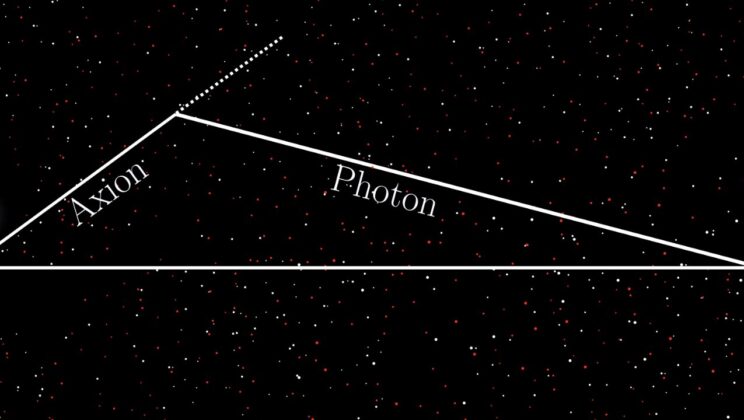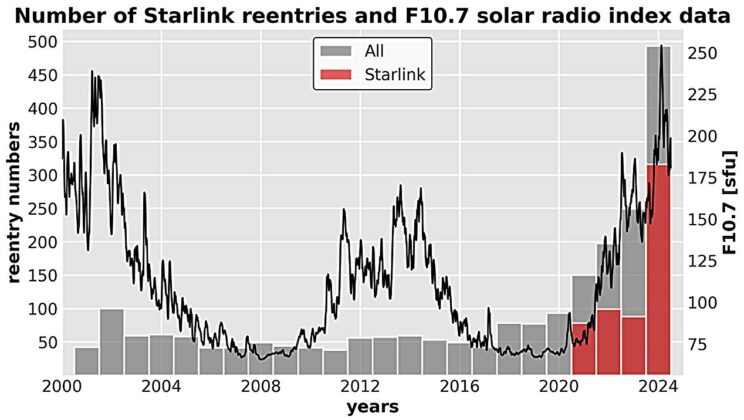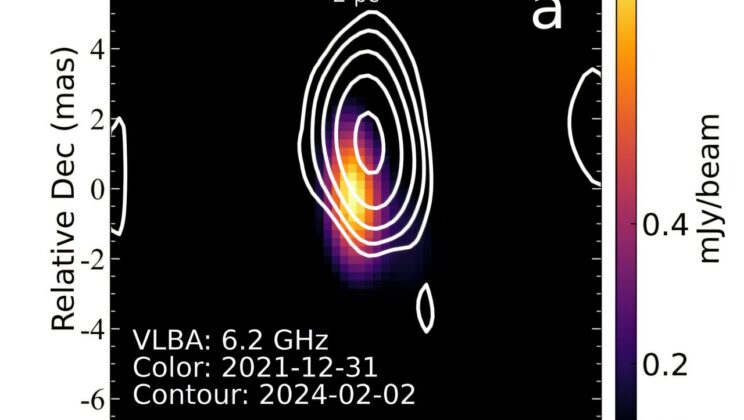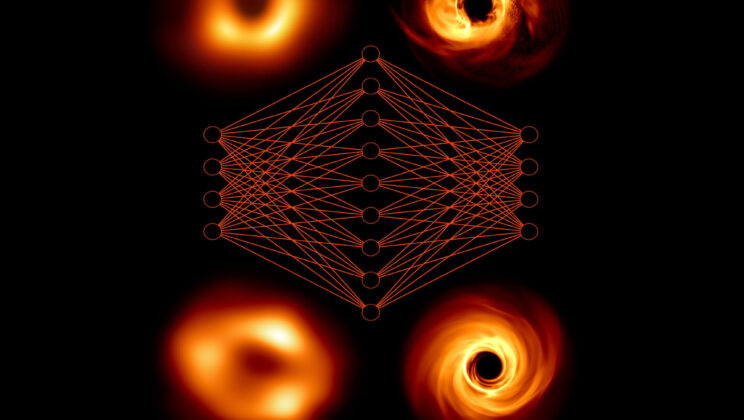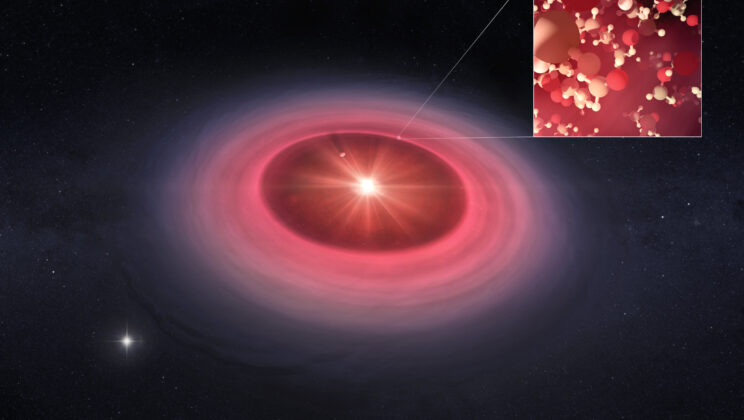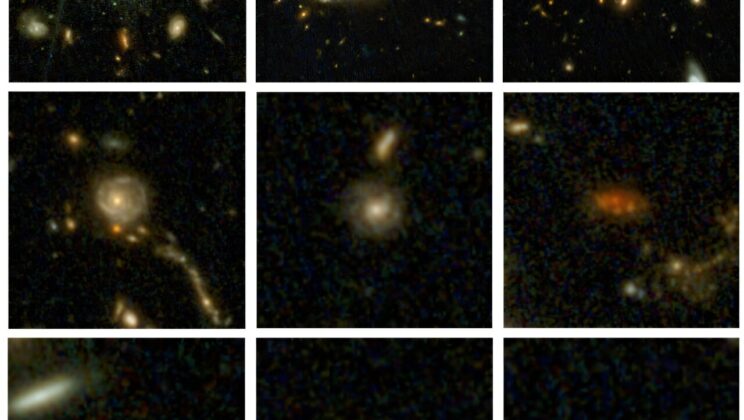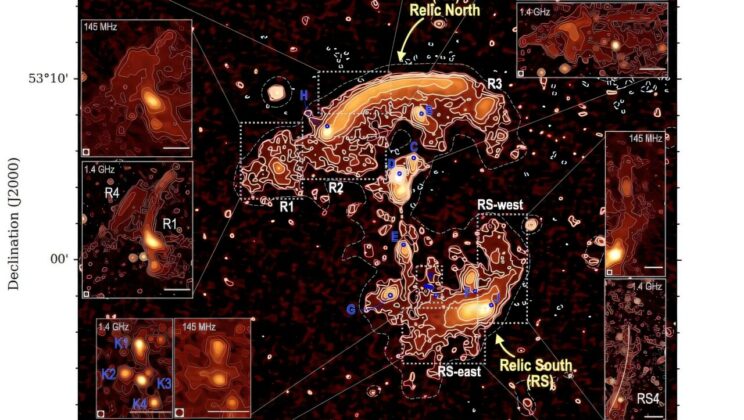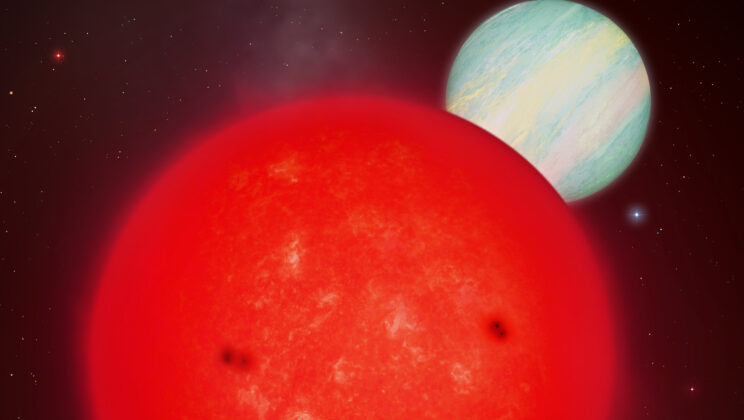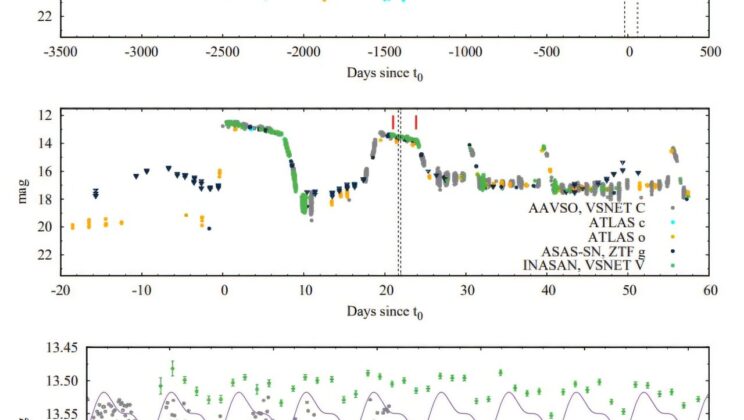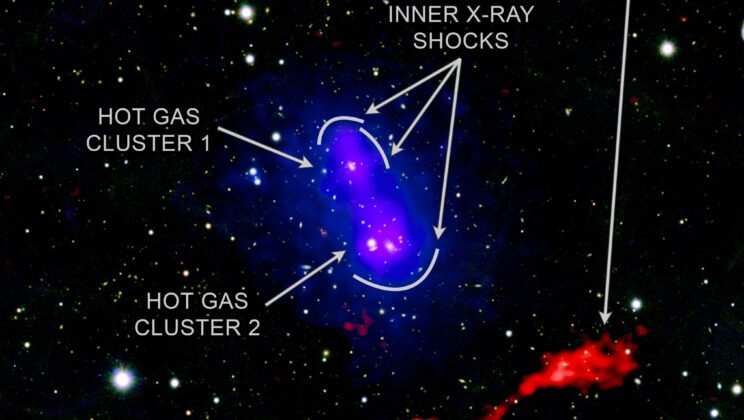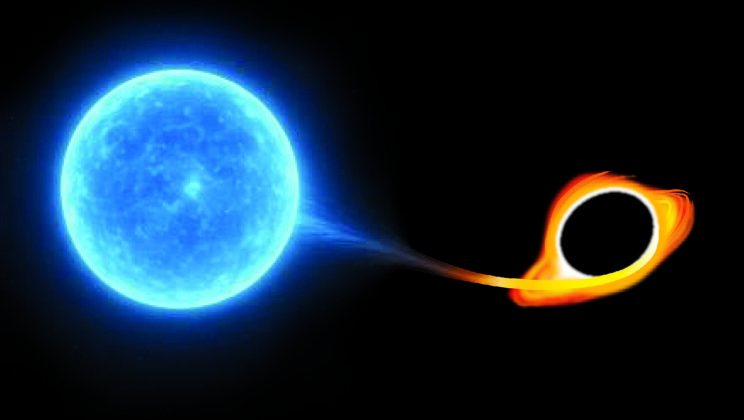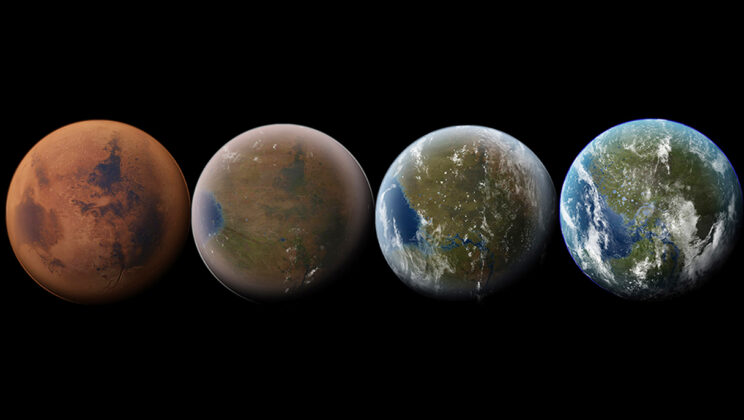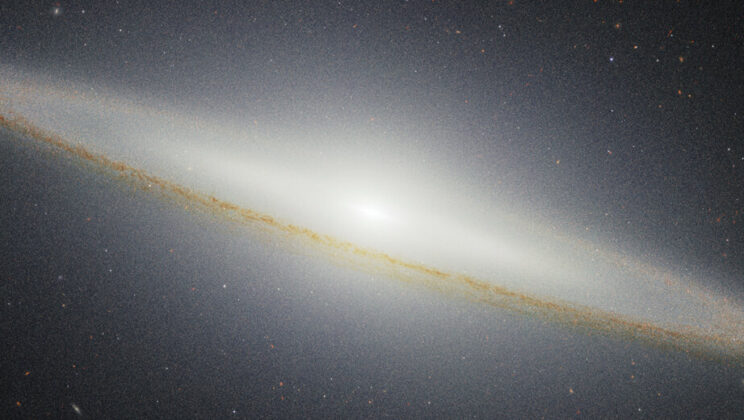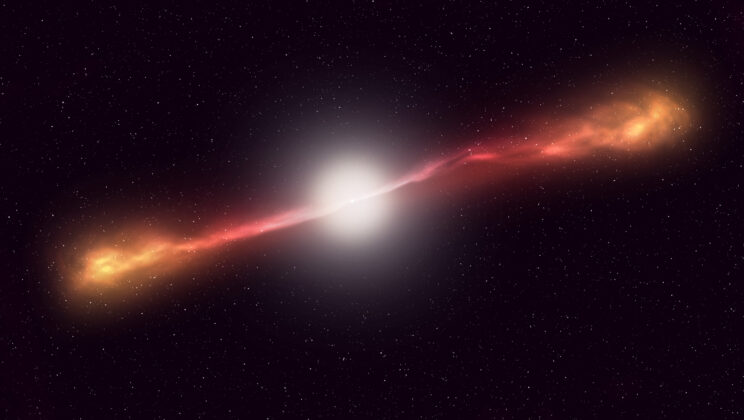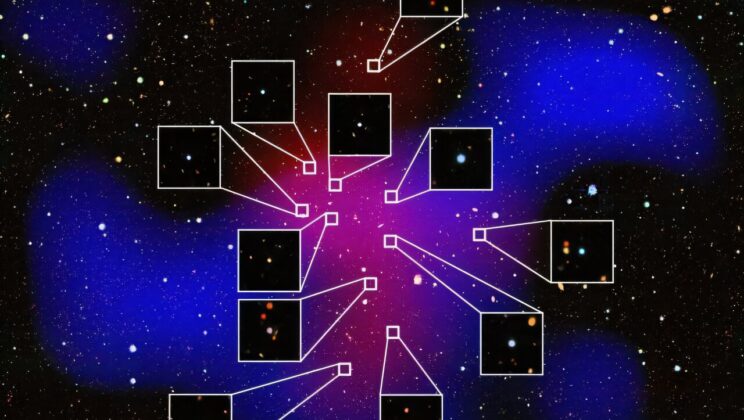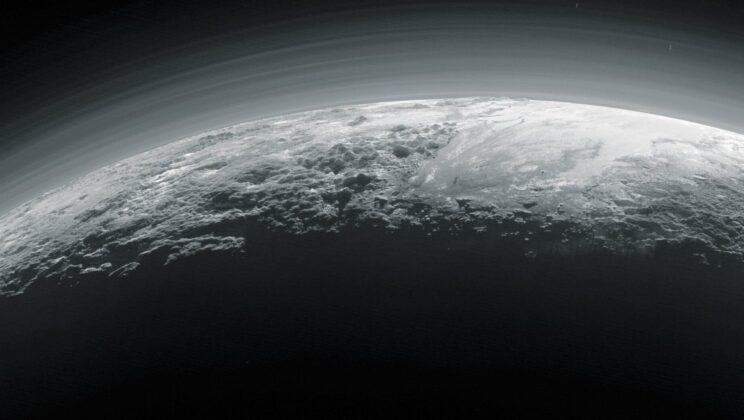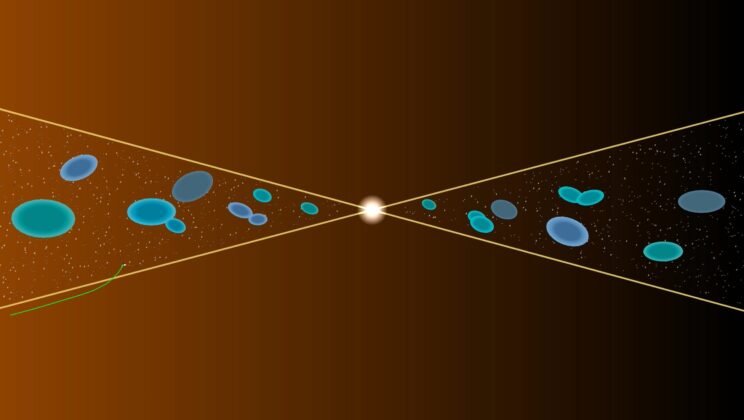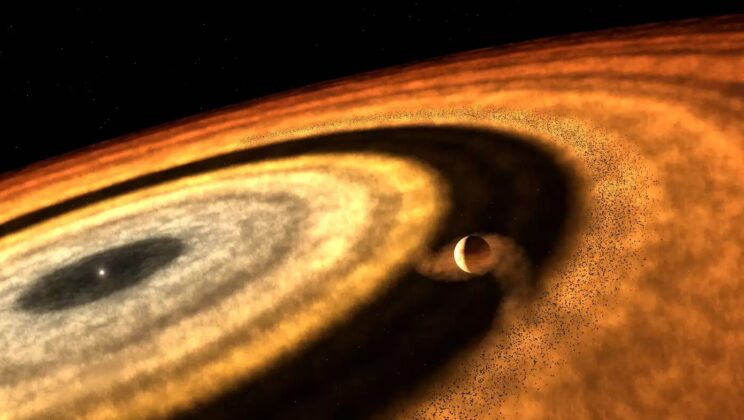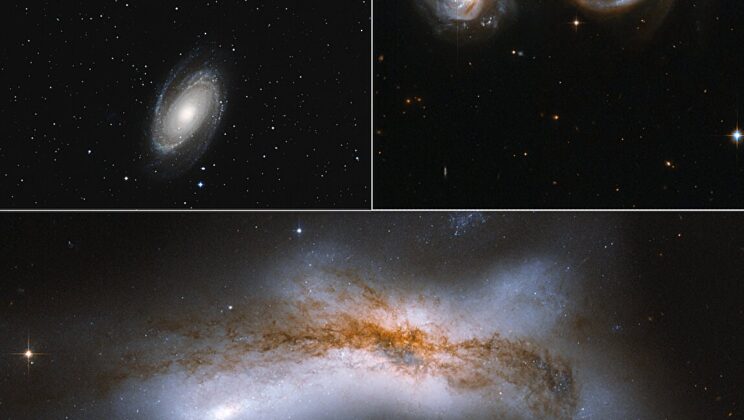In the vast silence of space, something is missing—something massive, invisible, and stubbornly elusive. For decades, scientists have tried to…
Category: Astronomy
The Sun Is Dragging Starlink Satellites Out of the Sky
In the invisible battleground where Earth’s atmosphere brushes up against the frontier of space, something strange is happening to the…
This Silent Galaxy Just Unleashed a Jet That Defies the Speed of Light
In the heart of a seemingly quiet galaxy some 500 million light-years away, astronomers have uncovered a cosmic cannon firing…
Neural Networks Unlock New Secrets of Milky Way’s Black Hole
The universe has always been a vast and mysterious place, with its most enigmatic objects being black holes. These cosmic…
Astronomers Uncover Rare Alcohol in Alien Planet Nursery That Could Explain How Life Began
In the cold void between stars, swaddled in thick veils of gas and ice, new worlds begin their long gestation.…
James Webb Telescope Reveals Nearly 800,000 Galaxies Changing Our View of the Infant Universe
In a milestone for astronomy and open science, the international COSMOS-Web collaboration has released the most expansive and detailed map…
Sausage Cluster Reveals Ancient Cosmic Shockwaves in Deep Radio Scan
Amid the vast, silent canvas of deep space, astronomers have learned to listen. Not with ears, but with colossal, ground-spanning…
What If the Big Bang Wasn’t the Beginning?
For nearly a century, the Big Bang theory has been the reigning champion of cosmic origin stories. It tells us…
Giant Planet Shocks Scientists Orbiting Tiny Star
The universe has a way of surprising us, often in the most unexpected corners. One of the latest cosmic curveballs…
The Universe’s Best Kept Secret J0722 Flashes Into Existence
In the grand theater of the cosmos, where stars burn and galaxies collide, some of the most compelling dramas unfold…
Cosmic Collision Sends Shock Waves Across 11 Million Light-Years
Out in the silent, ancient void 2.8 billion light-years from Earth, two colossal structures—each containing hundreds of galaxies, immense reservoirs…
New AI Model Reveals the Dead Sea Scrolls Are Older Than We Thought
Few archaeological finds have gripped the imagination of the modern world quite like the Dead Sea Scrolls. Hidden in desert…
Dying Stars Unleash the Brightest Explosions in the Universe
In the remote corners of deep space, hidden behind veils of dust and separated from us by millions of light-years,…
New Study Asks Is Mars Terraforming Even Possible
For generations, the idea of transforming Mars from a frozen desert into a second Earth has inspired dreamers and scientists…
Webb Unveils Sombrero Galaxy’s Violent Past
Long before space telescopes pierced the veil of the cosmos, before humanity launched instruments to orbit the Earth or even…
Black Holes The Universe’s Ultimate Particle Accelerators
For over a century, the secrets of the universe have teased humanity from behind a veil of darkness—an elusive darkness…
The Cosmic Himalayas: A Galactic Mystery at the Edge of the Universe
In the vast, cold darkness of space, there exist cosmic lighthouses so powerful that they can outshine entire galaxies. These…
Pluto Breathes and Charon Listens in a Cosmic Dance of Ice and Haze
When the James Webb Space Telescope (JWST) turned its powerful gaze toward the icy outskirts of our solar system, it…
Parker Solar Probe Uncovers Hidden Source of Sun’s Powerful Energetic Particles
The Sun is far more than a steady beacon in our sky—it is a boiling, roiling nuclear furnace, constantly releasing…
WASP-121b’s Fiery Orbit Reveals Surprising Methane and Secrets of Planet Formation
Astronomers have long imagined the birthplaces of planets as serene nurseries of dust and gas gently swirling in protoplanetary disks.…
A Dying Star Blazes Twice as Bright in a Distant Galaxy
On a quiet December night in 2024, as Earth rotated on unbothered by the chaos in the distant cosmos, the…
Andromeda Merger Less Likely Within 5 Billion Years
For decades, the fate of our home galaxy, the Milky Way, seemed sealed. Like the final act of a slow-motion…
